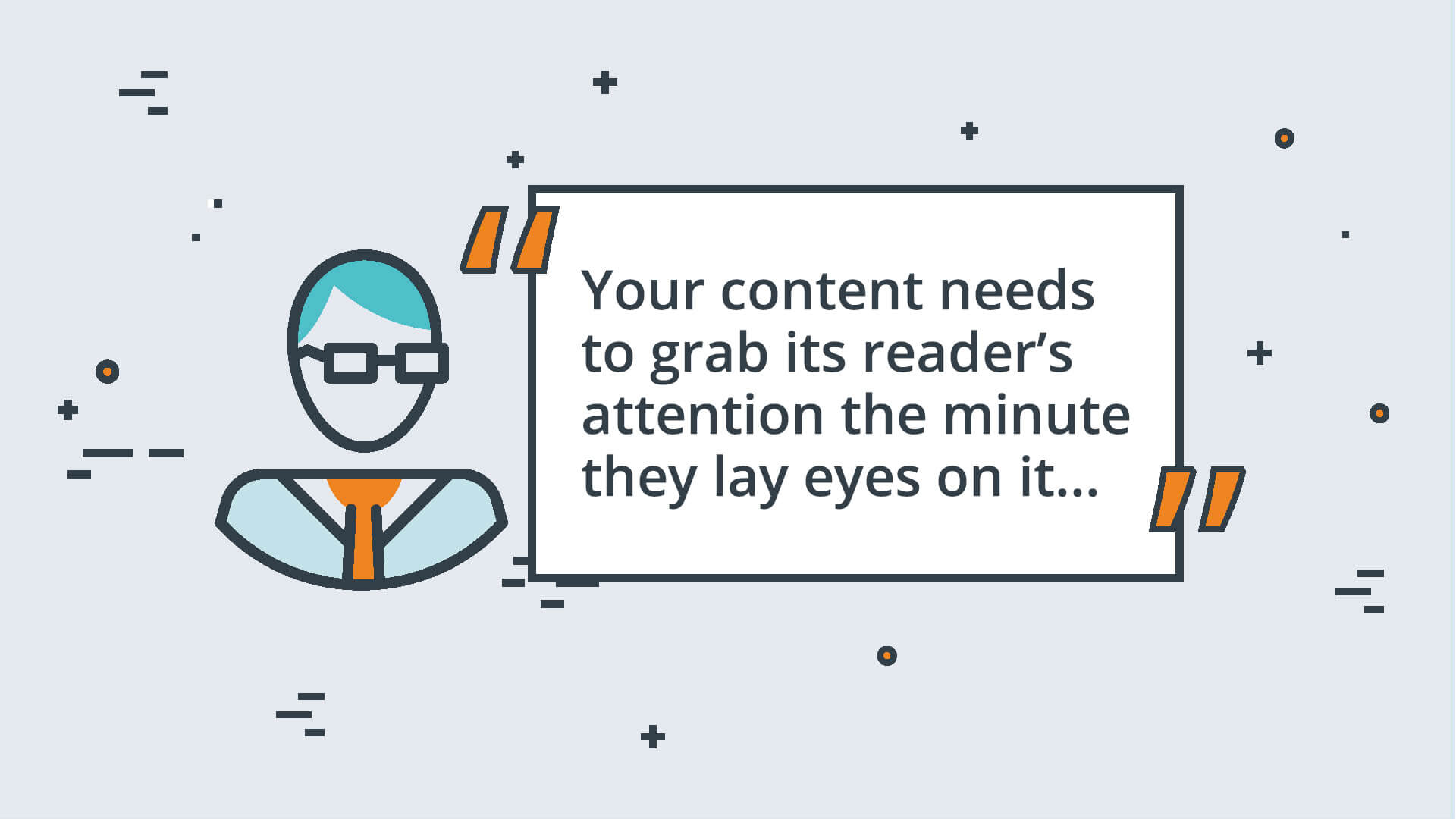8 Advanced Tips to Help Create Conversion-Friendly Content
 “Publish content that your website visitors will love!”
“Publish content that your website visitors will love!”
This statement has been uttered millions of times over the last several years, but many of the articles that preach this fail to explain why content is so important. Let’s get real for a minute and talk about the main purpose of your website content — it’s to get your visitors to take action. Content is a gateway to converting your traffic into leads, sales, and ultimately revenue for your business.
You can’t just throw up a blog post and cross your fingers, hoping it converts some of its readers. You need to publish conversion-friendly content if you truly want to reap the benefits of content marketing. The speed at which you are able to get your readers to take action directly impacts the number of conversions you are able to generate from your website content.
So, how do you improve your content, making it conversion-friendly? I recently spoke with eight business owners to put together advanced, yet easy to implement tips, to help you publish content that will help you drastically increase your conversion numbers:
- Be as clear as possible in your call-to-action copy.
- Write for a 10 to 15-year old audience.
- Highlight your value rather than general statements.
- Use questions to set up your content.
- Convey your message through visuals rather than text copy.
- Omit commitment from your call-to-action copy.
- Include your most valuable content in the first paragraph.
- Reference authority figures and publications.
1. Be as clear as possible in your call-to-action copy.
It’s important that your calls-to-action are crystal clear. If you expect your website visitors to take action, then you need to tell them exactly what it is that you want them to do, whether it’s subscribing to an opt-in email list, downloading a white paper report, signing up for a free trial or making a purchase.
Clearly convey what you want the visitor to do, using as few words as possible when it makes sense. For example, a “JOIN NOW” call-to-action on a newsletter offer button will pull a higher conversion rate than “Click Here to Join Our Email List.”
On the other hand, if you are trying to convert free trials, a button with “Get Your FREE 30 Day Trial” will outperform a button that simply says “Free Trial.”
Calls-to-action must be clear and detailed in order to successfully pull conversions.
Adam Steele, CEO of Loganix
2. Write for a 10 to 15-year old audience.
No matter how complex a topic might be, you need to make sure you keep your writing as clear and simple as possible, avoiding jargon and using little to no unfamiliar words. Use common words and short sentences, keeping your paragraphs as bite-sized as possible.
Don’t try to win literary awards with your website content — keep that 10 to 15-year old audience in mind when creating content and ask yourself, “Would a 4th through 9th grader understand this content and be able to make a conversion decision upon completion?” If the answer is “No,” then you need to make some edits to simplify it.
Ariel Chiu, Owner of Wonderstruck Events
3. Highlight your value rather than general statements.
If we were writing a blog post about the benefits of installing a new roof on your home, it could be geared towards a general statement, such as, “Installing a New Roof on Your Home Has Several Benefits,” or it could be value-focused, like, “15 Reasons Installing a New Roof Will Increase Your Home’s Value.”
The second option describes the value the readers are going to reap after engaging with the content.
Your website visitors want value and not general statements or information. Headlines that deliver value are more enticing, which will lead to more reads, eventually resulting in more conversions.
In the example above, readers won’t learn basic information; they will learn why a new roof is going to increase the value of their home.
Oz Taysun, CEO of Westchase Roofing
4. Use questions to set up your content.
Questions perform well when writing conversion-focused content because they provide an opportunity to frame a response designed to educate and inform your readers. If I were to write copy for one of my landing pages, I could use, “Why is Oahu the top scuba diving destination?” as a question to set up the copy.
The question hooks the reader, and from there you can write content that gives your readers the information they need in order to make a decision, which is whether to convert or bounce off the page.
Gabe Scotti, Founder of Kaimana Divers
5. Convey your message through visuals rather than text copy.
The human brain processes visual content 60,000 times faster than text-based content and 90 percent of the information transmitted to our brain is visual. Leverage this, and use visuals more frequently in your content, especially when you are trying to explain a complex topic.
Some of the most successful content contains infographics, because they are easier to digest than a large text post. The same information can be explained, but in a visual format it will hold your readers’ attention longer, increasing the chances of them converting after engaging with the content.
Melissa Blake, CEO of Les Saisons
6. Omit commitment from your call-to-action copy.
Consumers have a fear of commitment, so anytime you can eliminate that fear it will result in more conversions. For example, if you are offering a free trial, emphasize the lack of commitment by mentioning something along the lines of, “FREE Trial – No credit card required.”
If you really want to stress the zero-commitment, mention that it’s not only a free trial, but there is also an option to cancel at any time. Don’t be afraid of low conversion rates of trials to paid, as Amazon converts 73 percent of its 30-day Amazon Prime free trial offers.
Peter Gregory, MD, RPVI, Sound Vascular & Vein
7. Include your most valuable content in the first paragraph.
Our attention spans have gotten much shorter over time. According to a survey by Microsoft, the average attention span has fallen to eight seconds, down from 12 seconds in the year 2000. This is a shorter attention span than a goldfish, so remember this next time you are writing content.
You literally have mere seconds to grab the attention of your website visitors, so it’s important that you include your most valuable pieces of information in your first paragraph. When you address the Who, What, When, Where, Why, and How at the very beginning, you increase the odds of that visitor converting, even if they don’t consume the entire piece of content.
When done right, that information packed first paragraph can satisfy the reader enough that they convert on an exit-offer or immediately jump to your call-to-action.
Michael Tario, Founding Attorney, Tario And Associates
8. Reference authority figures and publications.
Most consumers are wired to trust recommendations from authority figures, which is one reason influencer marketing is so effective, and why brands give celebrities seven-figure endorsement deals.
You can take advantage of this by referencing authority personalities or sources in your content. You can accomplish this by including quotes, linking out to authority sources, or securing a testimonial from an authority personality within your niche.
Todd Tinker, Founder of The Tinker Law Firm, PLLC
Final Thoughts
Publishing conversion-friendly content isn’t easy — if it were, every website would be experiencing record-high conversion numbers. Your content needs to grab its reader’s attention the minute they lay eyes on it, and hold that attention until the point you introduce them to your call-to-action. Then, that call-to-action needs to entice the visitor to convert.
While difficult, it’s not impossible to create content that converts, so follow these tips and begin to watch your content convert more of your website traffic into leads, sale and revenue.













